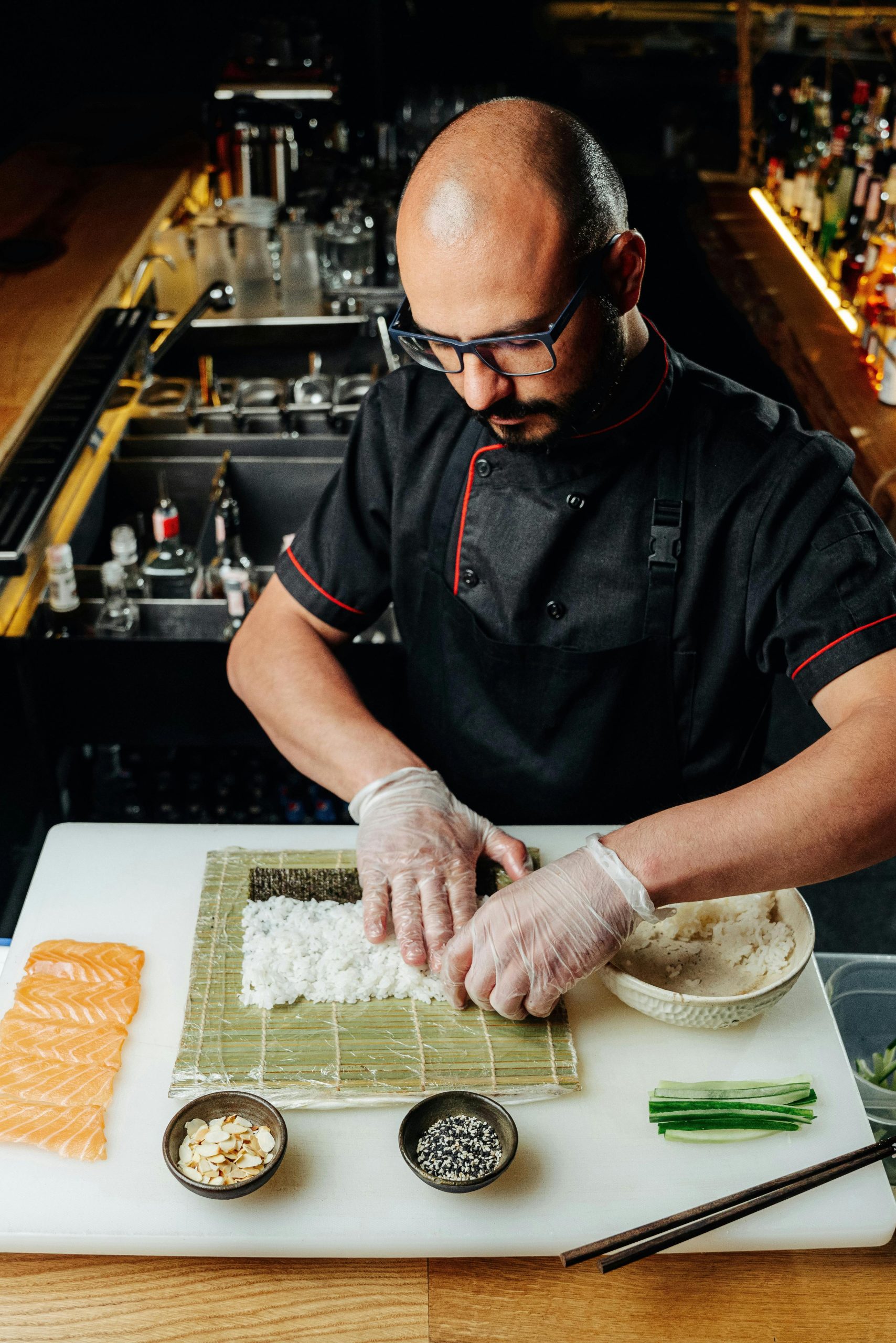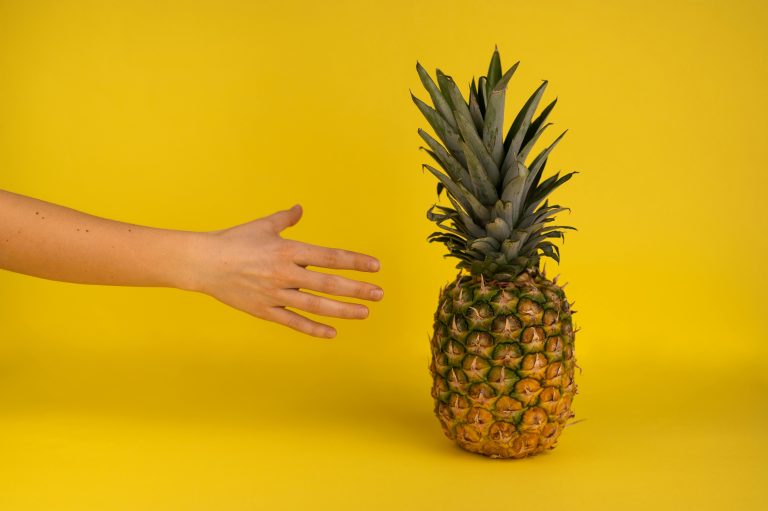Are you searching for the best rice for diabetics that can help improve your health? If you're living with diabetes or have a loved one who does, you understand the importance of maintaining a balanced diet to manage blood sugar levels effectively. While rice is often a staple in many diets, it can pose challenges for those with diabetes due to its impact on blood sugar levels. However, there are rice varieties and other grains that can be incorporated into a diabetic-friendly diet to provide essential nutrients while minimizing blood sugar spikes. In this article, we will explore the different types of rice and grains that are beneficial for diabetics, their health benefits, cooking tips, and recipes to help you make informed choices for better health.
Understanding Diabetes and the Role of Diet
Before we dive into the world of rice varieties suitable for diabetics, let's first understand what diabetes is and how diet plays a crucial role in managing the condition effectively.
What is Diabetes?
Diabetes is a chronic condition characterized by elevated blood sugar levels. It occurs when the body either does not produce enough insulin or cannot effectively use the insulin it produces. Insulin is a hormone that plays a vital role in regulating blood sugar levels by allowing cells to take in glucose for energy.
There are two main types of diabetes: type 1 and type 2 diabetes. Type 1 diabetes is an autoimmune condition where the body's immune system mistakenly attacks and destroys insulin-producing cells in the pancreas. It typically develops in childhood or adolescence, and people with type 1 diabetes require lifelong insulin therapy.
Type 2 diabetes is the most common form of diabetes, accounting for around 90% of cases. It usually develops in adulthood, although it is increasingly seen in younger individuals. Type 2 diabetes is primarily caused by lifestyle factors such as poor diet, sedentary lifestyle, obesity, and genetics. In type 2 diabetes, the body becomes resistant to insulin or does not produce enough to maintain normal blood sugar levels.
How Does Diet Impact Diabetes?
Diet is a fundamental aspect of diabetes management. Making healthy food choices, managing portion sizes, and understanding the impact of different foods on blood sugar levels are crucial for controlling diabetes.
Carbohydrates, including rice, have the most significant impact on blood sugar levels. Carbohydrates are broken down into glucose during digestion, and glucose is then released into the bloodstream, causing blood sugar levels to rise. However, not all carbohydrates are created equal; some are digested and absorbed more quickly than others, leading to more pronounced spikes in blood sugar.
For individuals with diabetes, it is essential to choose carbohydrates with a lower glycemic index (GI). The glycemic index is a ranking system that measures how quickly a food raises blood sugar levels compared to pure glucose. Foods with a high GI are digested and absorbed rapidly, causing blood sugar levels to spike, while low GI foods are digested and absorbed more slowly, resulting in a more gradual rise in blood sugar levels.
By choosing carbohydrates with a lower GI, individuals with diabetes can better manage their blood sugar levels and reduce the risk of hyperglycemia (high blood sugar) and hypoglycemia (low blood sugar).
The Importance of Choosing the Right Rice for Diabetics
Rice is a common staple that is consumed in various forms and cuisines worldwide. It is a versatile grain that can be a part of many meals. However, for individuals with diabetes, the choice of rice can significantly impact blood sugar levels. Understanding the glycemic index and other nutritional qualities of different rice varieties can help in making informed choices and optimizing health outcomes.
Glycemic Index: What You Need to Know
The glycemic index (GI) is a numerical value assigned to carbohydrates in food, indicating how quickly they raise blood sugar levels compared to pure glucose. The higher the GI value, the faster the rise in blood sugar levels. For diabetics, foods with a lower GI are preferred as they cause more gradual increases in blood sugar levels.
What is Glycemic Index?
The glycemic index is measured on a scale of 0 to 100, with pure glucose having a value of 100. Foods with a GI below 55 are considered low GI, those with a GI between 56 and 69 are considered medium GI, and those with a GI of 70 or above are considered high GI.
How Does Glycemic Index Affect Blood Sugar Levels?
When we consume carbohydrates, our bodies break them down into glucose, which is then absorbed into the bloodstream. Foods with a high GI are digested and absorbed quickly, causing blood sugar levels to rise rapidly. In contrast, foods with a lower GI take longer to be digested and absorbed, resulting in a slower and more gradual increase in blood sugar levels.
For individuals with diabetes, consuming foods with a lower GI can help prevent blood sugar spikes and maintain better overall blood sugar control.
Choosing the Right Rice for Diabetics
Now that we understand the importance of the glycemic index in managing blood sugar levels, let's explore some rice varieties that are suitable for diabetics
Brown Rice: The Superior Choice
Brown rice is often hailed as the superior choice for diabetics due to its lower glycemic index and higher nutritional value compared to white rice.
What is Brown Rice?
Brown rice is a whole grain rice that retains its bran and germ layers, unlike white rice which has these layers removed during processing. This means it is higher in fiber, vitamins, minerals, and antioxidants than its counterpart.
Health Benefits of Brown Rice for Diabetics
Brown rice has a lower glycemic index compared to white rice, which means it leads to a slower and more gradual rise in blood sugar levels. This is beneficial for individuals with diabetes as it helps prevent blood sugar spikes.
The high fiber content in brown rice is also advantageous for diabetics. Fiber helps slow down the digestion and absorption of carbohydrates, resulting in a more controlled release of glucose into the bloodstream. It also promotes satiety, helping individuals feel fuller for longer and potentially aiding in weight management and blood sugar control.
In addition to its impact on blood sugar levels, brown rice is also rich in essential nutrients such as magnesium, which plays a role in glucose metabolism, and selenium, an antioxidant that helps reduce inflammation and oxidative stress in the body.
Cooking Tips and Recipes with Brown Rice
There are many ways to incorporate brown rice into your diet. Here are some cooking tips and recipes to get you started:
- Cook brown rice with vegetable broth instead of water for added flavor.
- Try mixing cooked brown rice with grilled vegetables and lean protein for a nutritious and satisfying meal.
- Use cold, cooked brown rice as a base for a healthy and flavorful grain salad.
By incorporating brown rice into your meals, you can enjoy the nutritional benefits it offers while maintaining better blood sugar control as a diabetic.
Red Rice: A Colorful and Nutritious Option
Red rice is another rice variety that is suitable for diabetics due to its lower glycemic index and unique nutritional properties.
What is Red Rice?
Red rice gets its distinctive color from the anthocyanin pigments found in the bran layer. It is similar to brown rice in that it retains its bran layer during processing, making it a whole grain rice with higher nutritional value.
Health Benefits of Red Rice for Diabetics
Red rice has a lower glycemic index compared to white rice, making it a diabetic-friendly option. Its high fiber content and bran layer provide additional benefits.
The fiber in red rice helps slow down the digestion and absorption of carbohydrates, preventing blood sugar spikes. It also contributes to improved satiety and may aid weight management.
Red rice is also rich in antioxidants, such as anthocyanins, which have been shown to have anti-inflammatory and anti-diabetic properties. These antioxidants help reduce oxidative stress and inflammation in the body, which are both associated with diabetes and its complications.
Cooking Tips and Recipes with Red Rice
Here are some cooking tips and recipes to enjoy the unique flavor and nutritional benefits of red rice:
- Cook red rice using the absorption method to retain its color and texture.
- Use cooked red rice as a base for stir-fries or grain bowls.
- Add cooked red rice to salads or use it as a stuffing for vegetables.
By incorporating red rice into your meals, you can add a pop of color and enjoy its nutritional benefits as a diabetic.
Black Rice: The Forbidden Rice with Great Health Benefits
Black rice, also known as the forbidden rice, is an ancient grain that is becoming increasingly popular due to its unique taste, texture, and health benefits.
What is Black Rice?
Black rice gets its deep purple-black color from the anthocyanin pigments present in the outer layer. It is a whole grain rice that contains the bran layer, germ, and endosperm.
Health Benefits of Black Rice for Diabetics
Black rice is known for its high antioxidant content, which is attributed to its dark color. Antioxidants help protect the body against oxidative stress and inflammation, both of which are associated with diabetes and its complications.
Black rice has a lower glycemic index compared to white rice, making it a suitable choice for diabetics. It provides a steady release of glucose into the bloodstream, helping prevent blood sugar spikes.
Furthermore, black rice is rich in fiber, which aids digestion, promotes satiety, and helps regulate blood sugar levels. It is also a good source of iron, which is important for individuals with diabetes as they are at a higher risk of iron deficiency.
Cooking Tips and Recipes with Black Rice
Here are some cooking tips and recipes to incorporate black rice into your diet:
- Cook black rice using the ratio of 1:2 (rice to water) and bring it to a boil before reducing the heat and simmering until tender.
- Use cooked black rice as a base for Buddha bowls or grain salads.
- Add cooked black rice to soups or use it as a stuffing for vegetables.
By including black rice in your diet, you can enjoy its unique flavor and reap the health benefits it offers as a diabetic-friendly rice option.
Wild Rice: A Unique and Nutrient-dense Choice
Wild rice, despite its name, is not technically a type of rice. It is a semi-aquatic grass seed that is native to North America. However, it is often cooked and consumed as a rice substitute due to its similar appearance and texture.
What is Wild Rice?
Wild rice has a long, slender shape with a chewy texture and a nutty flavor. It is high in fiber, protein, and essential minerals.
Health Benefits of Wild Rice for Diabetics
Wild rice has a lower glycemic index compared to white rice, making it a suitable choice for managing blood sugar levels in individuals with diabetes.
Its high fiber content promotes satiety and aids in digestion. Additionally, wild rice contains essential minerals, such as magnesium, potassium, and zinc, which play important roles in glucose metabolism, blood pressure regulation, and overall health.
Cooking Tips and Recipes with Wild Rice
Here are some cooking tips and recipes to enjoy the unique flavor and nutritional benefits of wild rice:
- Cook wild rice using the ratio of 1:3 (rice to water) and simmer until tender.
- Use cooked wild rice as a base for grain bowls or as a side dish.
- Add cooked wild rice to soups or use it in stuffed bell peppers.
By incorporating wild rice into your diet, you can enjoy its unique texture and nutritional benefits as a diabetic-friendly grain option.
Other Grains for Diabetics
In addition to different rice varieties, there are many other grains that are suitable for diabetics due to their low glycemic index and nutritional value. These grains can be incorporated into the diet in various ways to provide a diverse range of flavors and textures.
Rolled Oats: A Heart-Healthy Option
Rolled oats, often consumed as oatmeal or in granola, are a nutritious whole grain option for diabetics.
Barley: Packed with Fiber and Nutrients
Barley is a versatile and nutrient-dense grain that can be used in soups, salads, or as a side dish.
Bulgur: A Versatile and Nutritious Grain
Bulgur is a partially cooked and dried whole grain that is quick to cook and can be used in pilafs, salads, or stuffed vegetables.
Quinoa: The Protein Powerhouse
Quinoa is a complete protein source and an excellent alternative to rice. It can be used in salads, stir-fries, or as a substitute for rice in various dishes.
Millet: A Gluten-Free Alternative
Millet, a gluten-free grain, can be cooked and used as a base for grain bowls, side dishes, or in baked goods.
Buckwheat: A Nutrient-Dense Grain
Despite its name, buckwheat is gluten-free and rich in nutrients. It can be used in dishes like soba noodles, porridge, or as a substitute for rice in dishes like pilafs.
These grains not only provide variety to the diet but also offer essential nutrients, fiber, and a lower glycemic index compared to white rice, making them suitable for individuals with diabetes.
Incorporating the Right Rice into Your Diet
Choosing the right rice and grains for diabetes is just one step towards maintaining optimal blood sugar control. It is essential to consider portion control, cooking methods, and overall dietary habits to achieve the desired health outcomes.
Portion Control: How Much Rice Should You Eat?
Portion control is critical for individuals with diabetes. While rice can be a part of a healthy diet, it is important to consume it in moderation and be mindful of portion sizes.
Aim to fill half of your plate with non-starchy vegetables, one-quarter with grains or starchy vegetables like potatoes, and one-quarter with lean protein. This balanced plate method ensures that your meals are well-rounded and provide a variety of nutrients without causing significant blood sugar spikes.
When serving rice, measure out a proper portion size using measuring cups, or use visual cues such as a clenched fist or a tennis ball to estimate portion sizes. One serving of cooked rice is generally around 1/2 to 1 cup.
Cooking Methods to Reduce Starch Content
Some cooking methods can alter the starch content of rice, making it less likely to cause rapid increases in blood sugar levels. These methods can be useful for individuals with diabetes who still want to enjoy rice but need to be mindful of their blood sugar levels.
Here are some cooking methods that can help reduce the starch content of rice:
- Soaking: Soak rice in water for 30 minutes before cooking to soften the grains and remove some of the starch.
- Parboiling: Boil rice for a few minutes and then drain and rinse to remove starch.
- Cooking with oil and vinegar: Adding a small amount of oil and vinegar to the cooking water can help reduce the starch content.
- Cooling and reheating: Cooling cooked rice in the refrigerator and then reheating it before eating can turn some of the digestible starches into resistant starches, which are digested more slowly.
While these methods may not eliminate all starch, they can help reduce the impact on blood sugar levels.
Creating Balanced Meals with the Right Rice
Incorporating the right rice and grains into your meals is just one aspect of managing diabetes. It is important to create balanced meals that include a variety of foods from different food groups to ensure adequate nutrient intake and blood sugar control.
When planning your meals, ensure that they include:
- Lean proteins: such as chicken, fish, tofu, or legumes.
- Healthy fats: from sources like nuts, seeds, avocados, and olive oil.
- Non-starchy vegetables: such as leafy greens, broccoli, cauliflower, bell peppers, and tomatoes.
- Whole grains or starchy vegetables: such as brown rice, red rice, black rice, wild rice, or other grains suitable for diabetics.
By incorporating a variety of these food groups, you can create well-balanced meals that provide essential nutrients and help manage blood sugar levels.
Sample Meal Plans and Recipes for Diabetics
Here are some sample meal plans and recipe ideas to help you incorporate the right rice and grains into your diabetic-friendly diet:
Sample Meal Plan 1:
- Breakfast: Overnight oats made with rolled oats, chia seeds, almond milk, and topped with fresh berries.
- Lunch: Grilled chicken or tofu with a side of steamed vegetables and half a cup of cooked brown rice.
- Snack: Greek yogurt with a tablespoon of mixed nuts.
- Dinner: Baked salmon or roasted vegetables with a side of wild rice pilaf.
- Snack: Carrot sticks with hummus.
Sample Meal Plan 2:
- Breakfast: Vegetable omelet made with egg whites, spinach, tomatoes, and feta cheese.
- Lunch: Quinoa salad with mixed greens, grilled chicken or tofu, cherry tomatoes, cucumbers, and a lemon vinaigrette.
- Snack: Apple slices with a tablespoon of almond butter.
- Dinner: Stir-fried vegetables with shrimp or tofu served over a bed of cauliflower rice.
- Snack: A small handful of unsalted almonds.
These sample meal plans can be adjusted to individual preferences and dietary needs. Remember to consult with a healthcare professional or registered dietitian to create a personalized meal plan that is suitable for your specific needs and goals.
Conclusion: Making Informed Choices for Better Health
Choosing the right rice and grains is crucial for individuals with diabetes to manage blood sugar levels effectively while still enjoying a variety of flavorful and nutritious meals. Rice varieties such as brown rice, red rice, black rice, and wild rice have lower glycemic index values and higher nutritional value compared to white rice, making them suitable options for diabetics.
Additionally, incorporating other grains like rolled oats, barley, bulgur, quinoa, millet, and buckwheat into the diet provides variety and nutritional benefits. It is important to control portion sizes, experiment with different cooking methods to reduce starch content, and create balanced meals that include a variety of food groups.
By making informed choices and incorporating the right rice and grains, individuals with diabetes can optimize their health and well-being while still enjoying delicious and satisfying meals. Remember to consult with a healthcare professional or registered dietitian for personalized dietary recommendations based on your specific needs and goals.




